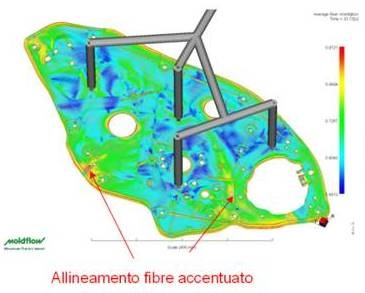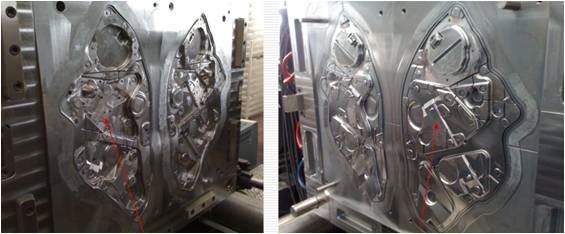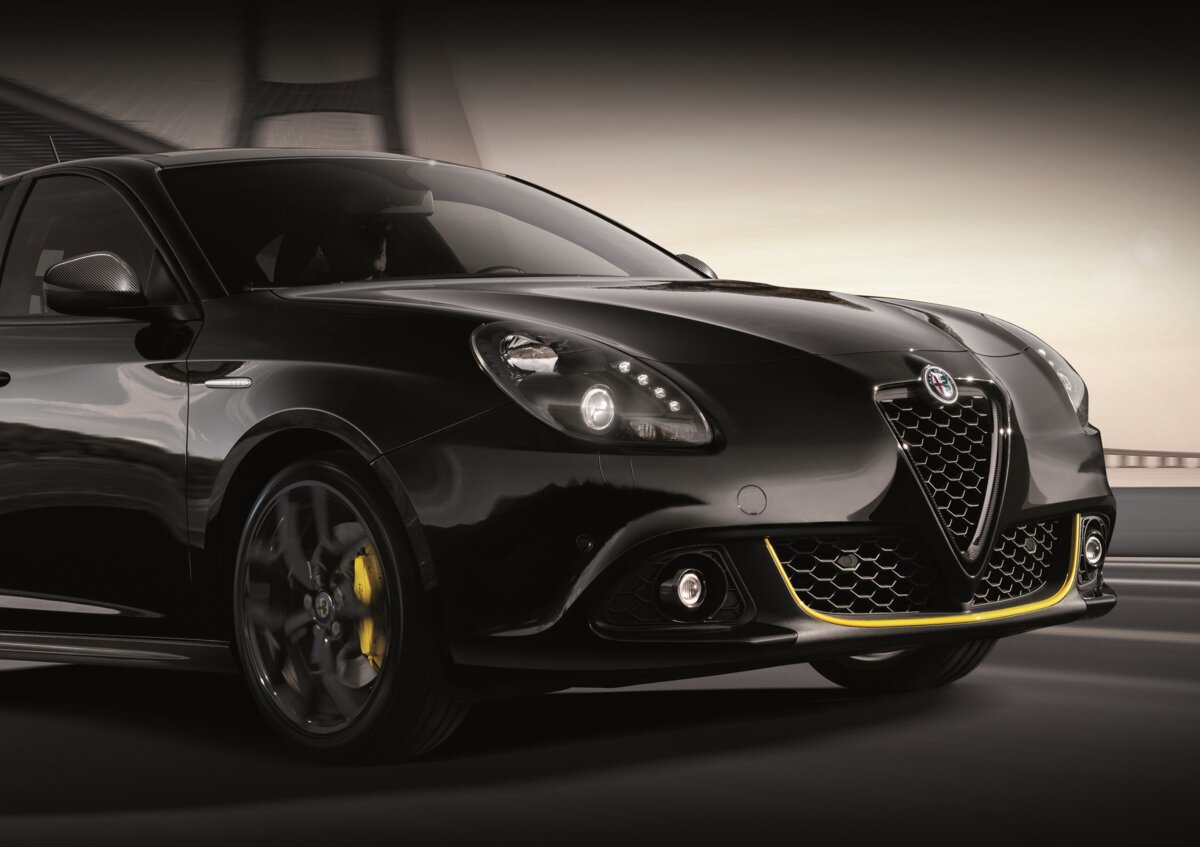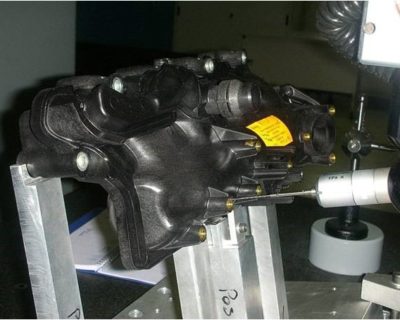Projects
Metal Replacement on Alfa Romeo Giulietta door carrier
The use of plastic materials favors solutions that meet two fundamental needs of the automotive sector: lightness and the integration of parts and functions. A thermoplastic carrier allows, with the same performance, to reduce weight, as well as eliminate a series of assemblies.
Objective:
- Same performance as the aluminum carrier
- Structure and weight optimization
- Function integration
- Ease of versioning
Activity:
- Select material
- Rheological analysis for deformation management
- Structural verification
- Double cavity mold construction
- Production

Choice of plastic material
To achieve the best weight / performance ratio, several technopolymers have been tested.
The final choice fell on PP + 40% LONG glass fiber, which thanks to its high mechanical performance is able to reach the project specifications with a low weight.



Criticality management and use of simulation
Due to its specific characteristics, this material requires particular attention to the rheological aspects, for the management of deformations due to fiber orientation.
The simultaneous execution of the rheological and structural checks made it possible to identify the correlations between the two aspects and to find the best solution for the injection points and for the geometry of the object.
Hybrid approach to the mold
The need to have samples of final technology to be tested in a short time, together with the search for investment optimization, suggested proceeding with a HYBRID APPROACH to the construction of the mold : prototype impressions were built applied on the final mold holder and using the hot chamber of the final mold (particularly complex and onerous, as there are 4 filling points for each of the two cavities).
To optimize the production and the quality of the process, the final choice was the creation of a mold with 1 + 1 cavity (right + left), with interchangeable inserts for the versions of the window regulator (electric / manual) and speaker seat
Product / process and production validation
The prototype impressions were used to obtain product approval and verify the reliability of the process.
The execution of the final impressions then allowed to carry out the pre-series for the final validation and to approve the start of production.


 Sito in Italiano
Sito in Italiano Sitio en Español
Sitio en Español